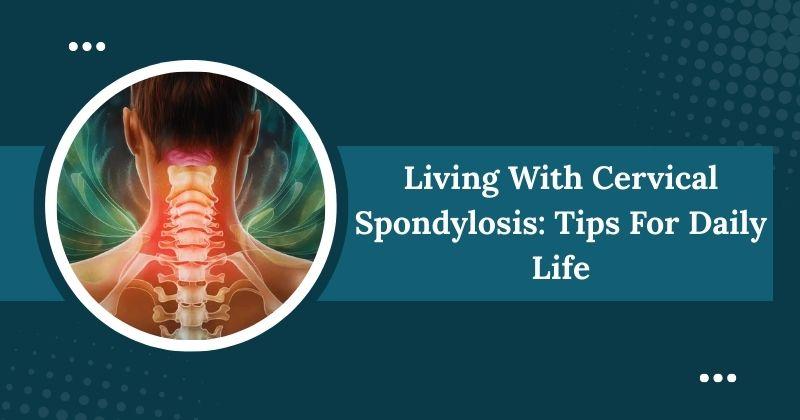Living With Cervical Spondylosis: Tips For Daily Life

Cervical spondylosis, commonly known as neck arthritis, is a condition resulting from age-related wear and tear affecting the spinal disks in your neck. Cervical spondylosis treatment physiotherapy includes neck strengthening exercises, posture correction, manual therapy, traction, heat therapy, and ergonomic advice to reduce pain, improve mobility, and prevent further degeneration. Regular sessions aid recovery. While this is a common condition among people over 50, its symptoms—ranging from neck stiffness and pain to numbness, tingling, or weakness in the limbs—can significantly impact daily life.
Living with cervical spondylosis doesn’t mean giving up your normal routine. With a few adjustments and the right strategies, you can manage the condition effectively and live a comfortable life. Here are some practical tips to help ease your symptoms and improve your quality of life.
Understanding Your Condition
Education is the first step toward management. Understand that cervical spondylosis is a degenerative condition, but not necessarily progressive in a way that will always lead to disability. Many people live active lives with manageable symptoms. Recognize the triggers that worsen your pain—poor posture, long hours at a desk, or stress can all contribute to flare-ups.
Prioritize Good Posture
Posture plays a key role in managing neck pain. Whether you're sitting at a desk, using your phone, or sleeping, maintaining proper alignment of your neck and spine can prevent pain and stiffness.
-
Workstation ergonomics: Use a chair that supports your lower back and keeps your feet flat on the floor. Your computer screen should be at eye level to avoid straining your neck.
-
Phone usage: Avoid bending your neck down to look at your phone. Instead, hold it at eye level.
-
Sleeping position: Use a cervical pillow that supports the natural curve of your neck. Avoid sleeping on your stomach, which can twist the neck.
Incorporate Regular Exercise
Low-impact, regular exercise is crucial for managing cervical spondylosis. Activities like walking, swimming, and yoga help strengthen muscles, improve flexibility, and reduce stiffness.
-
Focus on neck stretches and mobility exercises that improve range of motion.
-
Avoid high-impact sports or movements that strain the neck.
Exercise also promotes better blood circulation, reduces inflammation, and improves your overall mood, an important factor when dealing with chronic pain.
Practice Cervical Spondylosis Treatment at Home
Home remedies can play a significant role in your daily management plan. These non-invasive, simple practices can alleviate discomfort and support long-term healing.
Some effective cervical spondylosis treatment at home strategies include:
-
Heat and cold therapy: Applying a warm compress can help relax stiff muscles, while cold packs reduce inflammation and numb sharp pain.
-
Over-the-counter pain relief: Nonsteroidal anti-inflammatory drugs (NSAIDs) like ibuprofen can help manage pain episodes.
-
Gentle stretching: Daily neck stretches and shoulder rolls can ease tight muscles and enhance flexibility.
-
Hydration and diet: Staying well-hydrated keeps spinal disks in good shape. Also, consume a diet rich in anti-inflammatory foods—such as leafy greens, berries, and omega-3 fatty acids.
However, always consult with a medical professional before starting any home treatment routine, especially if your symptoms are severe or worsening.
Utilize Cervical Spondylosis Treatment Physiotherapy
Professional guidance through cervical spondylosis treatment physiotherapy is one of the most effective ways to manage the condition long-term. A trained physiotherapist can design a personalized program that includes:
-
Posture correction techniques
-
Neck and shoulder strengthening exercises
-
Stretching routines for the cervical spine
-
Manual therapy to reduce joint stiffness
-
Ultrasound or electrotherapy for pain relief
Physiotherapy not only helps relieve current symptoms but also teaches you techniques to prevent future flare-ups. Sessions often focus on restoring mobility, reducing muscle tension, and building endurance in supportive muscles.
Manage Stress Effectively
Stress often contributes to muscle tension, which can make cervical spondylosis symptoms worse. Incorporate stress-reduction techniques into your daily routine, such as:
-
Meditation and deep breathing exercises
-
Progressive muscle relaxation
-
Mindful walking or stretching
-
Journaling or engaging in hobbies
Even a few minutes of stress relief daily can make a noticeable difference in how your body responds to pain and inflammation.
Make Smart Lifestyle Adjustments
Living well with cervical spondylosis also involves adjusting your daily habits. Here are some simple but effective changes:
-
Take regular breaks if your work involves sitting for long hours.
-
Avoid carrying heavy bags on one shoulder; use a backpack or wheeled bag instead.
-
Stay hydrated and eat foods rich in calcium and vitamin D for bone health.
-
Avoid smoking, which reduces blood flow to spinal disks and can accelerate degeneration.
Know When to Seek Medical Help
While self-care strategies are beneficial, it’s important to know when to seek professional help. If you experience:
-
Persistent or worsening neck pain
-
Weakness or numbness in your arms or legs
-
Loss of bladder or bowel control
Consult a doctor immediately. These could be signs of more serious complications requiring medical or even surgical intervention.
Conclusion
Cervical spondylosis may be a lifelong condition, but it doesn’t have to control your life. By combining cervical spondylosis treatment at home with professional support like cervical spondylosis treatment physiotherapy, and by adopting mindful daily habits, you can significantly improve your comfort and mobility. The goal is not just pain relief, but a better, more active life with fewer limitations.
Remember, small changes can lead to big improvements. Listen to your body, stay active, and don’t hesitate to seek help when needed. You’ve got this.
For More:- (Click Here)
- Information Technology
- Office Equipment and Supplies
- Cars and Trucks
- Persons
- Books and Authors
- Tutorials
- Art
- Causes
- Crafts
- Dance
- Drinks
- Film
- Fitness
- Food
- Jogos
- Gardening
- Health
- Início
- Literature
- Music
- Networking
- Outro
- Party
- Religion
- Shopping
- Sports
- Theater
- Wellness



